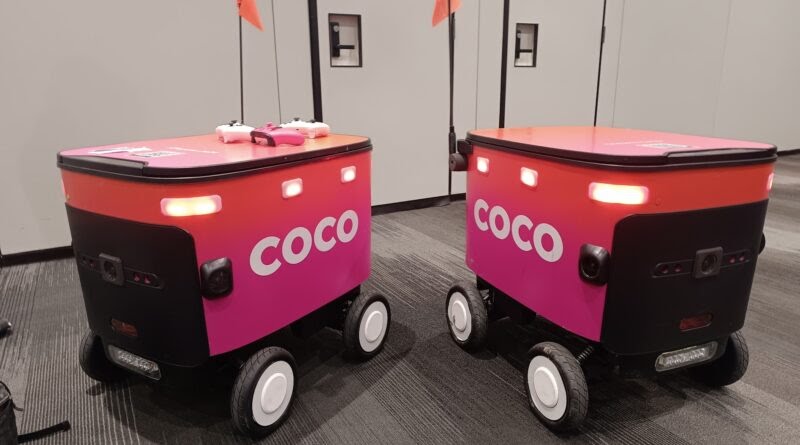As cities grow denser and consumer demand for fast, reliable delivery surges, last mile delivery remains one of the most challenging and costly stages in logistics. Automated delivery robots once a futuristic concept are now entering real world deployment, offering promising solutions to urban congestion, labor shortages, and environmental concerns. But will these robotic couriers truly resolve the last mile delivery puzzle?
A Glimpse Into the Future Highlights from the New York Auto Show
At the 125th New York International Auto Show held last April, a pivotal session titled The Future of Urban Mobility Safety at the Traffic Safety Forum explored how innovations in autonomous vehicles, smart infrastructure, and robotic technologies are shaping safer, more efficient cities. The discussion revealed that automated delivery robots are no longer experimental; they are part of broader city planning conversations, focused on improving both delivery logistics and pedestrian safety.
The Last Mile Problem: What Needs Solving?
The last mile refers to the final leg of the delivery journey from a distribution center to the customer’s doorstep. According to McKinsey, this segment accounts for over 50% of total delivery costs, largely due to traffic delays fuel inefficiencies, and human labor constraints. In urban areas delivery trucks often add to congestion, emit harmful gases, and struggle with parking limitations.
Automated delivery robots, operating on sidewalks or low speed streets, could be the answer. Compact, electric, and semi autonomous, these robots reduce the need for large vehicles in crowded neighborhoods and provide contactless delivery an increasingly desirable feature in the post pandemic world.
Safety Must Lead Innovation
Dr. Amanda Reyes, a transportation safety researcher at MIT, commented at the forum. While the potential is significant, the focus must remain on integrating these technologies safely into our communities. Automated delivery robots must coexist with pedestrians, cyclists, and urban infrastructure without introducing new risks.
She emphasized the need for rigorous safety trials, ethical programming, and community involvement in deployment decisions. These robots must not only follow traffic rules but also interpret nuanced human behaviors like a child darting onto a sidewalk or a senior citizen crossing slowly.
Starship Technologies in Milton Keynes
Perhaps the most referenced success story is Starship Technologies in Milton Keynes, UK. Since 2018, the company has operated thousands of autonomous delivery robots that deliver groceries and takeout to local residents.
According to a 2023 report by the city council, Robot related accidents were near zero. Residents reported high satisfaction rates (over 85%). The robots reduced short car trips, leading to a 4% drop in neighborhood level emissions. These results suggest that with careful planning, automated delivery robots can seamlessly integrate into suburban and urban life, benefiting not only the economy but also the environment.
Regulatory, Ethical, and Practical Challenges
Despite early successes, scaling these solutions poses real challenges. Cities must decide where and how these robots can legally operate. Are sidewalks public spaces for pedestrians only? Who is liable in case of an accident?
Samir Patel, CTO of UrbanX Robotics, warns,
We can’t treat cities as test labs. Real world complexity is messy weather changes, human unpredictability, cyber risks. We need robust protocols and multi stakeholder governance before declaring automated delivery robots as a last mile savior.
There are also economic concerns. As robots reduce human delivery jobs, are companies prepared to retrain displaced workers? Will the cost of maintenance, software upgrades, and insurance offset the savings?
Life with a Delivery Bot
New York resident Laura Cheng, who participated in a pilot delivery program in Brooklyn, shared her experience. It was convenient my coffee arrived warm and on time but also a bit surreal. People would stop and stare. One child even followed it to our building. But once you get used to it, it feels like a natural extension of modern living.
Her experience reflects both the novelty and potential normalization of these devices. Over time, the presence of automated delivery robots may become as mundane as seeing an electric scooter.
The Role of Smart Infrastructure
One key insight from the New York Auto Show was the growing synergy between automated delivery robots and smart urban infrastructure. Cities that are upgrading with AI enabled traffic signals, pedestrian detection systems, and curbside management platforms are creating environments where delivery robots can thrive.
For instance, San Francisco’s Connected Corridors initiative provides real time data on pedestrian density, road closures, and optimal delivery windows data that autonomous delivery systems can integrate into their route planning.
A Piece of the Puzzle, Not the Whole Solution
So, will automated delivery robots solve last mile delivery issues? The answer is nuanced. They are not a silver bullet, but they are a critical piece of a multifaceted solution.
When paired with intelligent urban design, ethical regulation, and inclusive workforce planning, these robots can make last mile delivery faster, safer, greener, and more efficient. Cities, companies, and citizens must collaborate to ensure that technology serves people not the other way around.

